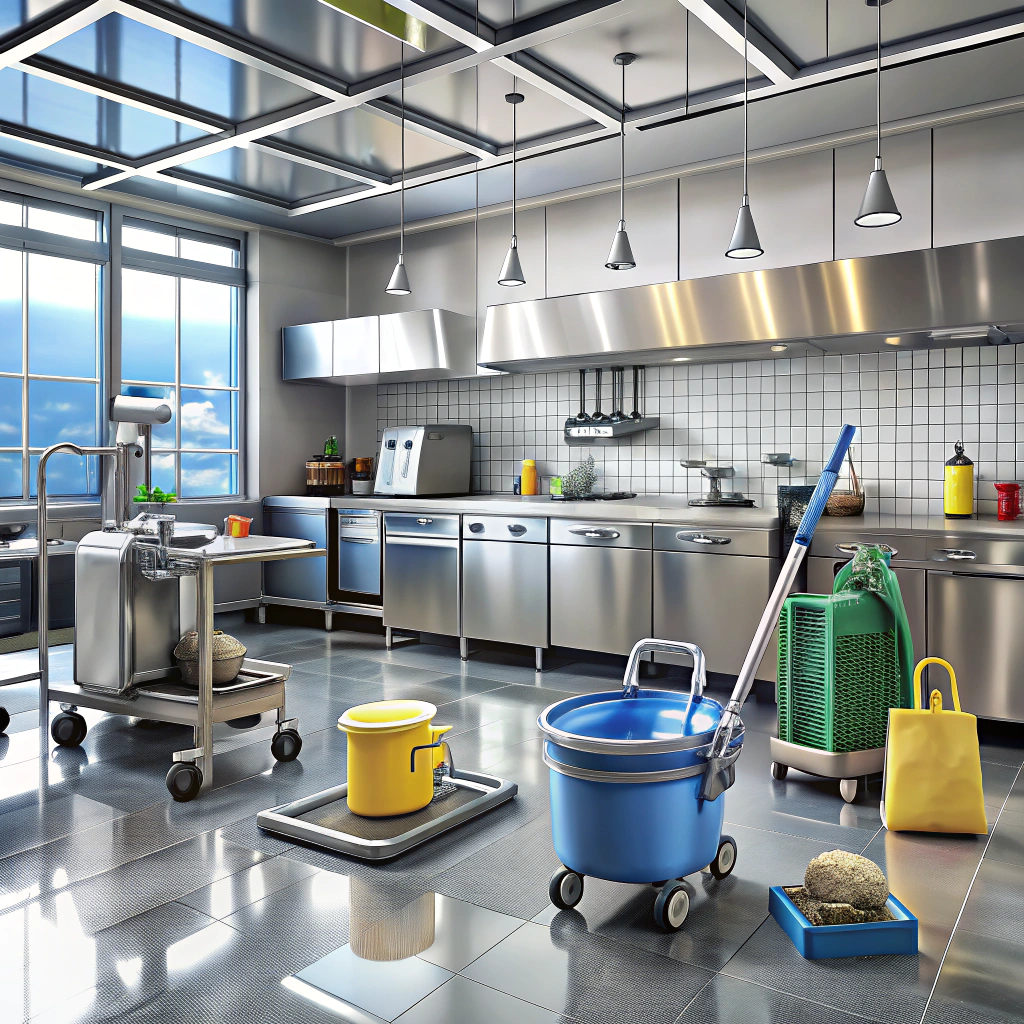Last updated on
Discover the most sought-after finish for kitchen cabinets that has homeowners raving and transforming their cooking spaces into stylish and functional havens.
The kitchen is the heart of any home, and it’s no surprise that homeowners pay special attention to its design and functionality. One of the most important decisions when designing a kitchen is choosing the right cabinet finish.
With so many options available, it can be overwhelming to decide which one will best suit your style and needs. In this article, we’ll explore the most popular finishes for kitchen cabinets, their pros and cons, and why they might be the perfect fit for your home.
So let’s dive in!
Key takeaways:
- Painted cabinets offer endless customization and color options.
- Stained cabinets showcase the natural beauty of wood grain.
- Glazed cabinets add depth and dimension to cabinetry.
- Distressed cabinets create a rustic, vintage look.
- Acrylic cabinets provide a sleek and modern aesthetic.
What's Inside
What Is A “Finish”?
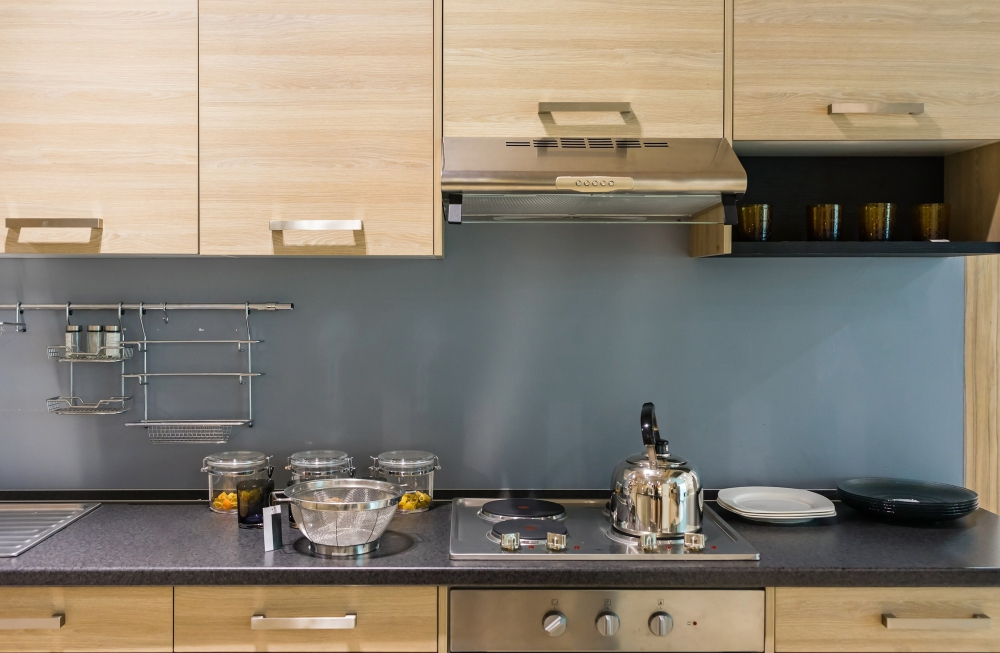
It’s what gives your cabinets their color, texture, and shine. The finish also protects the wood or material underneath from moisture, scratches, and other damage.
There are many types of finishes available for kitchen cabinets today. Some popular options include painted finishes that come in a variety of colors; stained finishes that showcase the natural beauty of wood grain; glazed finishes that add depth and dimension to cabinetry; distressed or vintage-style finishes for an antique look; high-gloss acrylics for modern kitchens with sleek lines.
Each type has its own unique characteristics and benefits depending on your style preferences and needs.
Painted Cabinets
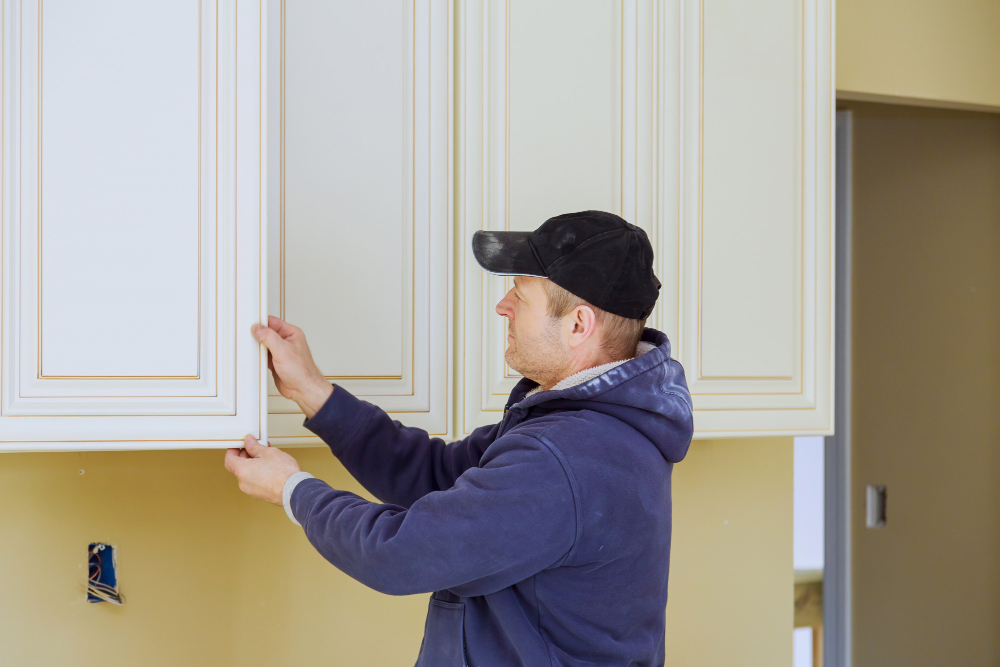
With endless color options available, painted cabinets can be customized to fit any style or design preference. They also offer the flexibility of being able to change the color down the line if you decide you want something different.
However, it’s important to note that painted cabinets require more maintenance than other finishes as they are prone to chipping and showing wear over time. It’s essential that they’re properly cleaned and maintained regularly with gentle cleaning products.
When choosing your paint finish, consider whether you want a matte or glossy look. Matte finishes have become increasingly popular in recent years due to their ability to hide fingerprints and smudges better than glossier finishes.
Stained Cabinets
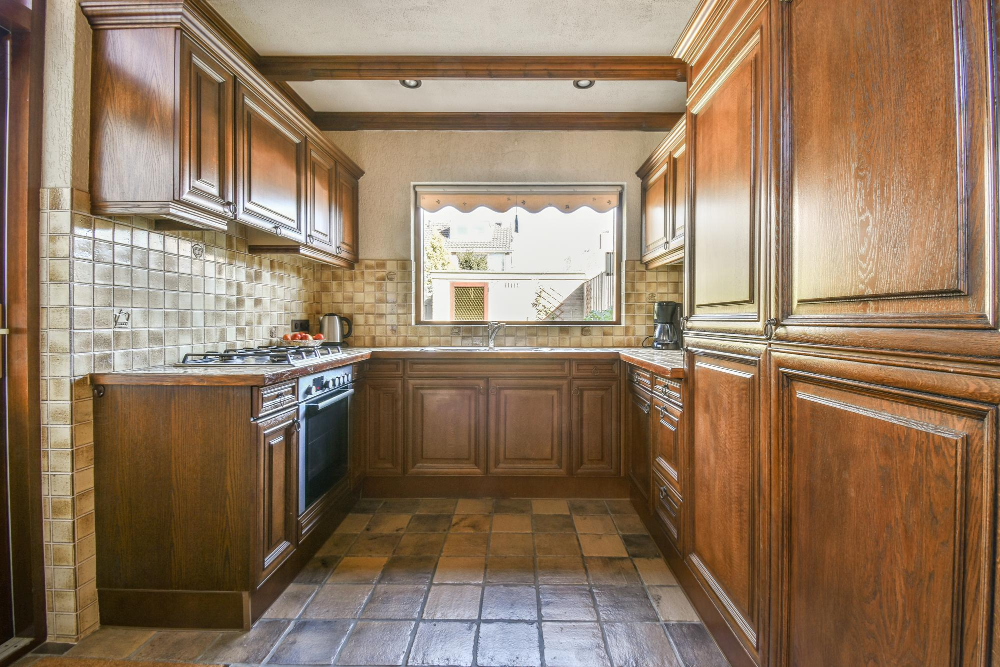
Stains come in a variety of colors, from light to dark, and can be applied to any type of wood. Unlike paint, stains penetrate the surface of the wood and enhance its texture while still providing protection against wear and tear.
One advantage of stained cabinets is that they are easy to touch up if they get scratched or damaged over time. However, it’s important to note that staining requires more maintenance than painted cabinets since it doesn’t provide as much protection against moisture or spills.
When choosing a stain color for your kitchen cabinets, consider factors such as lighting and existing decor elements like flooring or countertops. Lighter stains work well in smaller kitchens with limited natural light while darker stains add warmth and depth in larger spaces.
Glazed Cabinets

A glaze is a semi-transparent coating that is applied over the base coat of paint or stain, creating an antique or distressed look. Glazing can be done on any type of cabinet material, including wood, MDF (medium-density fiberboard), and laminate.
One advantage of glazed cabinets is that they can hide imperfections in the wood grain or surface finish. The glaze fills in small cracks and crevices, giving the cabinet doors an aged appearance.
Another benefit of glazed cabinets is their versatility when it comes to color options. You can choose from a wide range of colors for your base coat and then select a complementary glaze color to create your desired effect.
However, one downside with glazed finishes is that they require more maintenance than other types of finishes because dirt tends to accumulate in crevices created by the glazing process. Regular cleaning with mild soap and water will help keep them looking great for years.
Distressed Cabinets
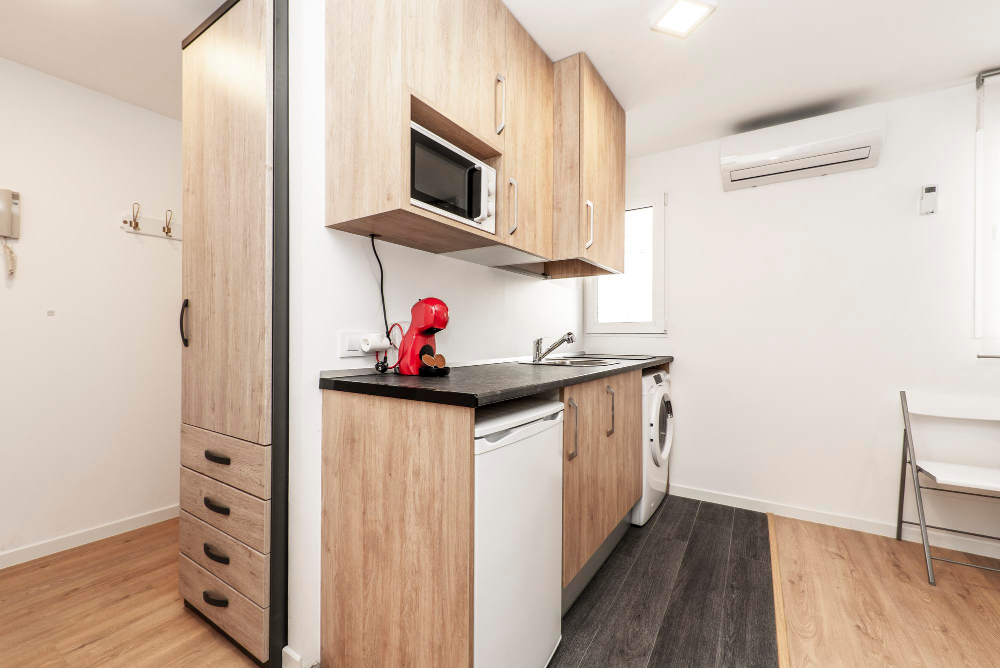
This finish is achieved by intentionally damaging the wood surface, creating an aged or weathered appearance. The result is a rustic, vintage look that can complement both traditional and modern kitchens.
There are several techniques used to distress cabinets, including sanding down edges and corners, adding dents or scratches with tools like hammers or chains, applying layers of paint in different colors then sanding them off unevenly. Distressed finishes come in various shades from light whitewashed looks to dark espresso tones.
While distressed cabinets may not be suitable for every home decor style due to their unique aesthetic appeal; they can add warmth and personality when paired with the right design elements such as natural stone countertops or farmhouse-style sinks.
If you’re considering distressed cabinetry for your kitchen renovation project but aren’t sure where to start – consult with a professional designer who specializes in this type of finish.
Laminate Finishes

Laminate is made by layering paper or fabric with resin and then applying it to a substrate, such as particleboard. The result is a durable and easy-to-clean surface that can mimic almost any material.
One of the benefits of laminate finishes is their versatility in design. They come in an array of colors, patterns, and textures that can match any kitchen style from modern to traditional.
They are resistant to scratches and stains making them ideal for busy households.
However, one downside to laminate cabinets is that they cannot be refinished once damaged or worn out like solid wood cabinets can be sanded down and re-stained/painted over time.
Thermofoil Finishes

Thermofoil is a vinyl material that is applied to MDF (medium-density fiberboard) using heat and pressure, creating a smooth and durable finish.
One of the benefits of thermofoil finishes is their resistance to moisture, making them an ideal option for kitchens with high humidity levels. They are also easy to clean and maintain, requiring only soap and water.
However, it’s important to note that thermofoil finishes can be prone to peeling or cracking over time if exposed to extreme temperatures or excessive force. They may not have as many color options as other cabinet finishes.
Acrylic Cabinets

These cabinets are made from high-quality acrylic material that is durable, easy to clean, and resistant to scratches and stains. Acrylic finishes come in a range of colors, including glossy or matte options.
One of the benefits of choosing acrylic cabinets is that they can be customized to fit any design style. They can be paired with other materials such as wood or metal for added texture and interest.
Because they have no visible seams or joints like traditional wood cabinetry does, they offer an ultra-modern aesthetic.
Another advantage of acrylic cabinet finishes is their low maintenance requirements compared to other types of cabinet finishes such as painted ones which may require touch-ups over time due to chipping or fading paintwork.
High-Gloss Cabinets
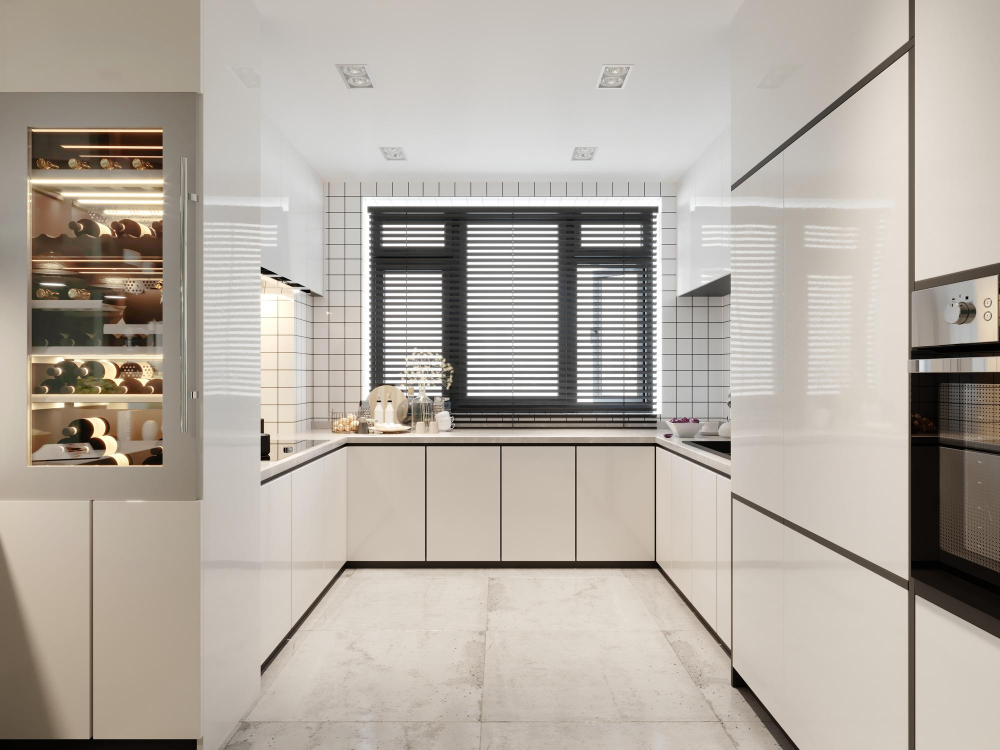
These cabinets have a shiny finish that reflects light, making your space appear brighter and more spacious. High-gloss finishes are available in various colors, from classic white to bold red or black.
They are usually made of acrylic or laminate materials that provide durability and resistance to scratches.
However, high-gloss finishes require regular cleaning as they tend to show fingerprints and smudges easily. Also, keep in mind that these types of cabinets can be expensive compared to other finishes due to their unique manufacturing process.
Wood Veneer Cabinets
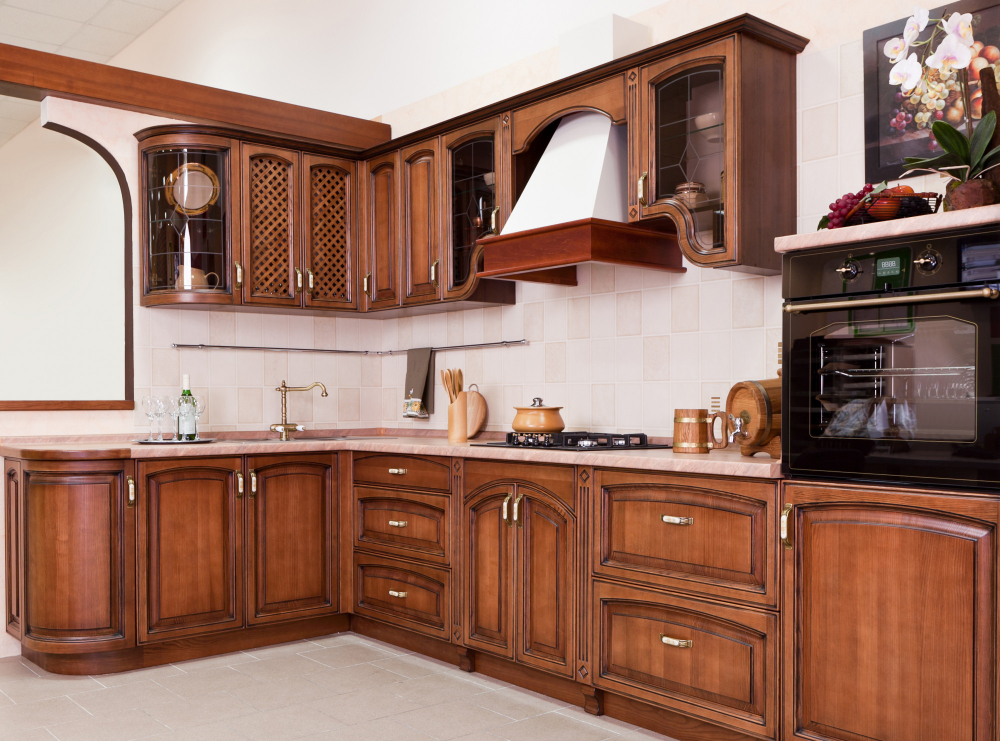
Veneers are thin slices of wood that are glued onto a substrate, such as particleboard or MDF (medium-density fiberboard). The result is a cabinet that looks like solid wood but is more affordable and sustainable.
One advantage of using veneers is their versatility in terms of color and grain patterns. They can be stained to match any shade or painted to achieve any style, from traditional to modern.
Because they’re made from real wood, they have natural variations in texture and tone that add character to your kitchen.
However, it’s important to note that not all veneers are created equal. Some lower-quality options may peel or warp over time due to moisture exposure or poor adhesion between the layers.
To avoid this issue, make sure you choose high-quality materials and work with an experienced installer who knows how best to apply them.
Glass-Front Cabinets
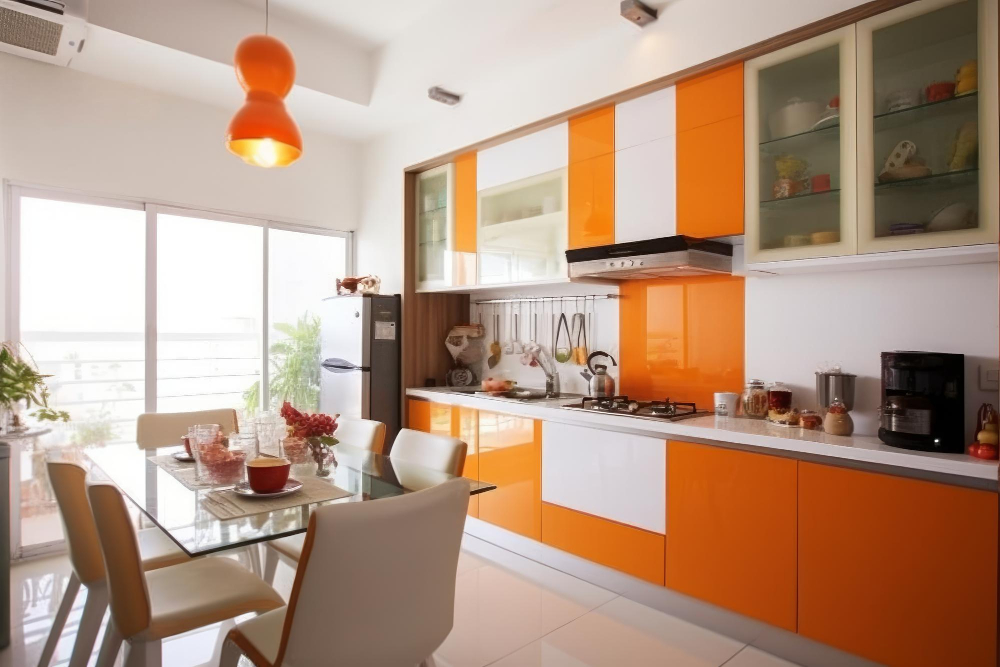
These cabinets feature doors made of clear or frosted glass, which allows you to display your favorite items while keeping them protected from dust and debris.
One advantage of glass-front cabinets is that they can make a small kitchen feel more spacious by creating the illusion of depth. They also add an elegant touch to any kitchen design, whether it’s modern or traditional.
However, there are some downsides to consider before choosing this type of cabinet finish. Glass-front cabinets require regular cleaning as fingerprints and smudges can be easily visible on the surface.
If you have young children in your home or tend to be clumsy in the kitchen, these types of doors may not be practical as they could break easily.
Custom Finishes
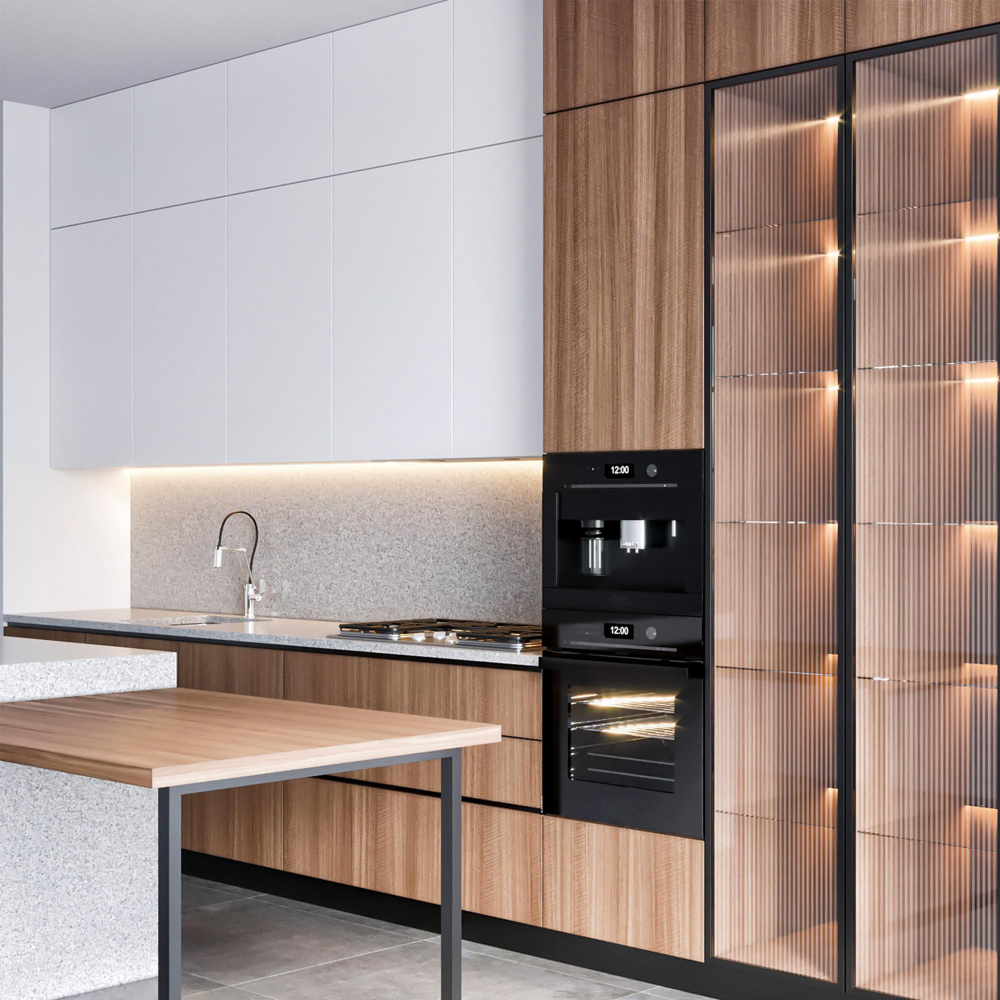
With custom finishes, you can choose from an endless array of colors, textures, and patterns that will make your cabinets stand out. Whether you want a bold statement or something more subtle and sophisticated, there’s no limit to what you can achieve with custom finishes.
One popular option for custom cabinet finishes is hand-painted designs. Skilled artisans can create intricate designs on cabinet doors using paintbrushes and stencils.
This technique allows for unique patterns that cannot be replicated by machines.
Another option is adding decorative hardware such as knobs or pulls in various shapes and sizes that complement the overall design of the kitchen space.
If you’re looking for something truly one-of-a-kind, consider commissioning an artist to create a mural on your cabinetry surfaces. This approach adds personality while also serving as functional art within the room.
Eco-Friendly Finishes
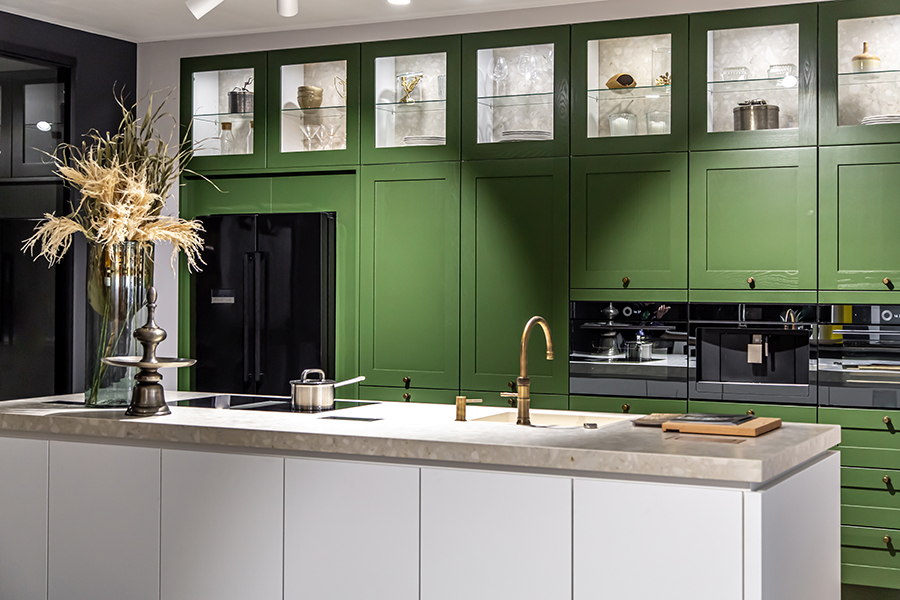
These finishes are made from sustainable materials, such as bamboo or reclaimed wood, and use non-toxic paints or stains that emit fewer harmful chemicals into the air.
One of the most popular eco-friendly cabinet finishes is water-based paint. Unlike traditional oil-based paints that contain volatile organic compounds (VOCs), water-based paints have lower levels of VOCs and emit less odor during application.
They also dry faster than oil-based paints, making them more convenient for busy households.
Another option for an eco-friendly finish is natural oils like linseed oil or tung oil. These oils penetrate deep into the wood grain to protect it from moisture while enhancing its natural beauty without emitting any toxic fumes.
Vintage Finishes
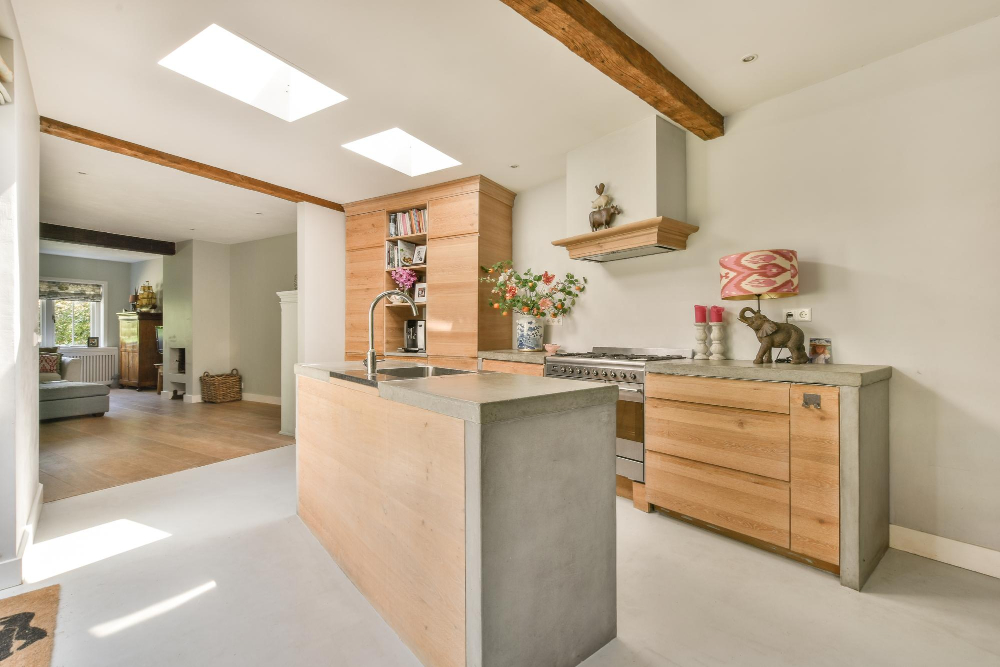
These finishes often feature distressed or weathered looks that give the cabinets an aged appearance. Vintage finishes can be achieved through various techniques, such as sanding, staining, and painting.
One of the most popular vintage cabinet finish styles is shabby chic. This style features pastel colors with a worn-out look that gives off a cozy and inviting vibe in your kitchen space.
Another option is rustic cabinetry which uses natural wood tones with visible knots and grains on display for an authentic feel. Rustic cabinets are perfect if you’re looking for something warm yet rugged in your cooking area.
If you’re going all out on vintage decor, consider adding antique hardware like knobs or handles to complete the look of your retro-inspired kitchen design.
Metal-Finish Cabinets
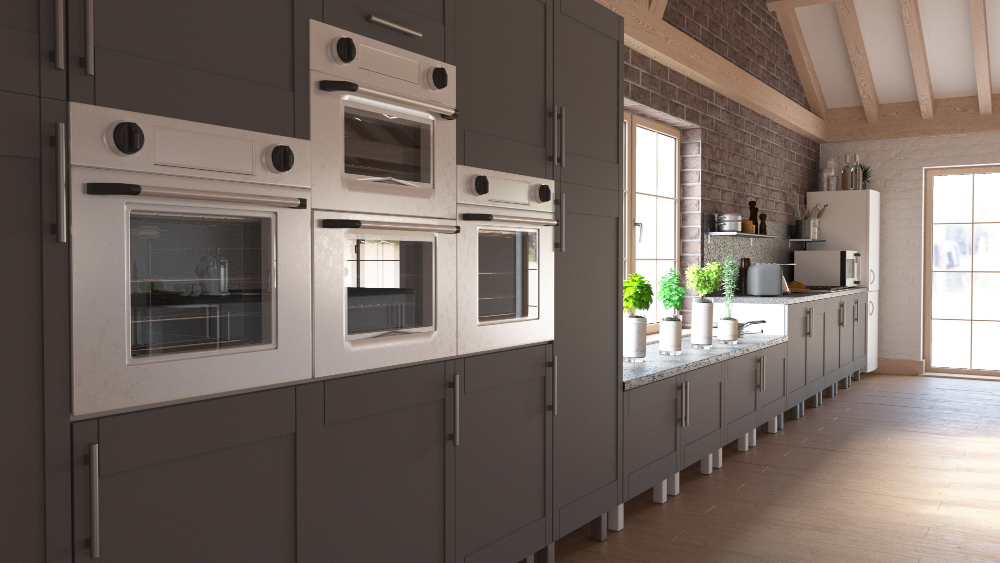
These cabinets come in a variety of finishes, including stainless steel, brushed nickel, and copper. They are durable and easy to clean but can be prone to scratches and fingerprints.
Stainless steel is the most common metal finish for kitchen cabinets because it’s sleek, modern-looking, and matches well with other appliances. It’s also resistant to heat damage from stovetops or ovens.
Brushed nickel has a warmer tone than stainless steel but still offers that metallic shine that many homeowners love. Copper is another option that adds warmth while providing an eye-catching focal point in your kitchen.
When choosing metal-finish cabinets for your home, consider the overall style of your space as well as how much maintenance you’re willing to do over time.
Two-Tone Cabinets
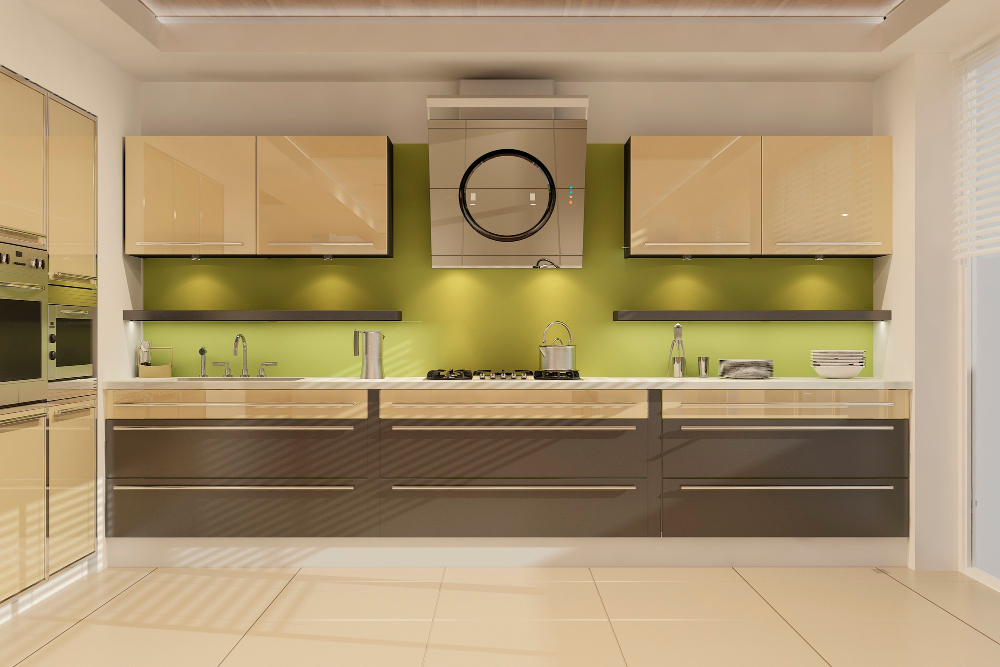
This trend involves using two different colors or finishes on your upper and lower cabinets to create contrast and visual interest. For example, you could pair white upper cabinets with navy blue lower ones or opt for natural wood uppers with black painted lowers.
The possibilities are endless when it comes to creating a custom look that reflects your personal style. Two-tone cabinetry can also help break up large kitchens by visually separating the space into different zones.
When choosing colors for your two-tone kitchen, consider pairing complementary shades such as warm beige with cool gray or light blue with soft green. You can also experiment with contrasting finishes like matte versus glossy surfaces.
Matte Vs. Glossy Finishes
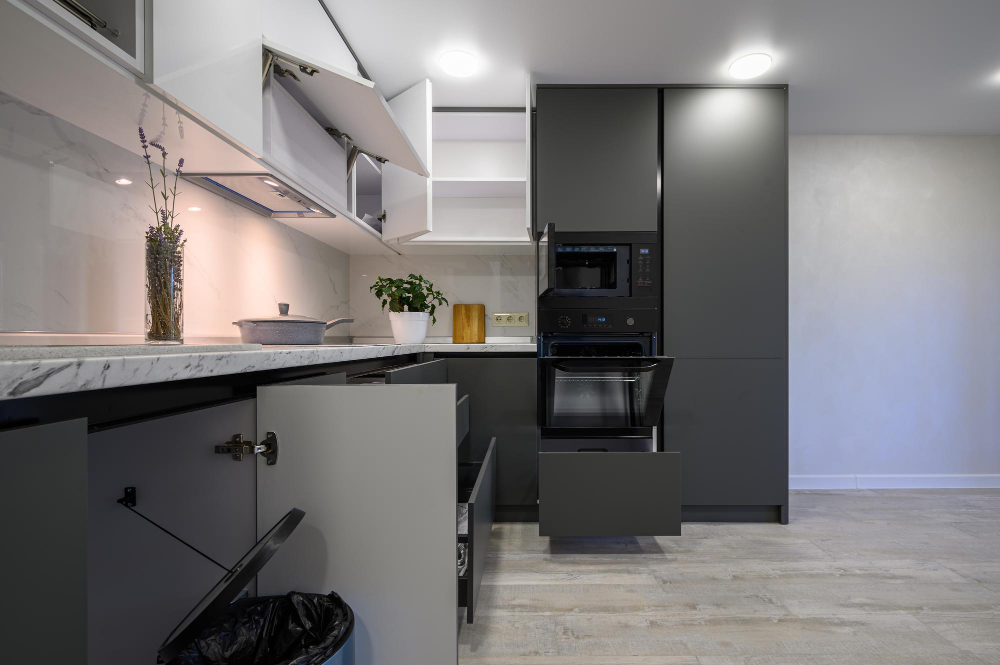
Matte finishes have a non-reflective, velvety appearance that can add depth and texture to your kitchen design. They’re also great at hiding fingerprints, smudges, and scratches.
On the other hand, glossy finishes have a shiny surface that reflects light beautifully and creates an illusion of space in smaller kitchens.
When choosing between matte or glossy cabinet finish for your kitchen remodel project, consider factors such as lighting conditions in your cooking area or how often you use it. If you want to create a cozy atmosphere with warm colors like brown or beige on walls but still keep things modern-looking without too much shine – go with matte finish cabinets! However if you prefer brighter colors like white or gray on walls then opt-in for high-glossy finished cabinetry which will reflect more light into space making it appear larger than its actual size.
Choosing Your Cabinet Finish
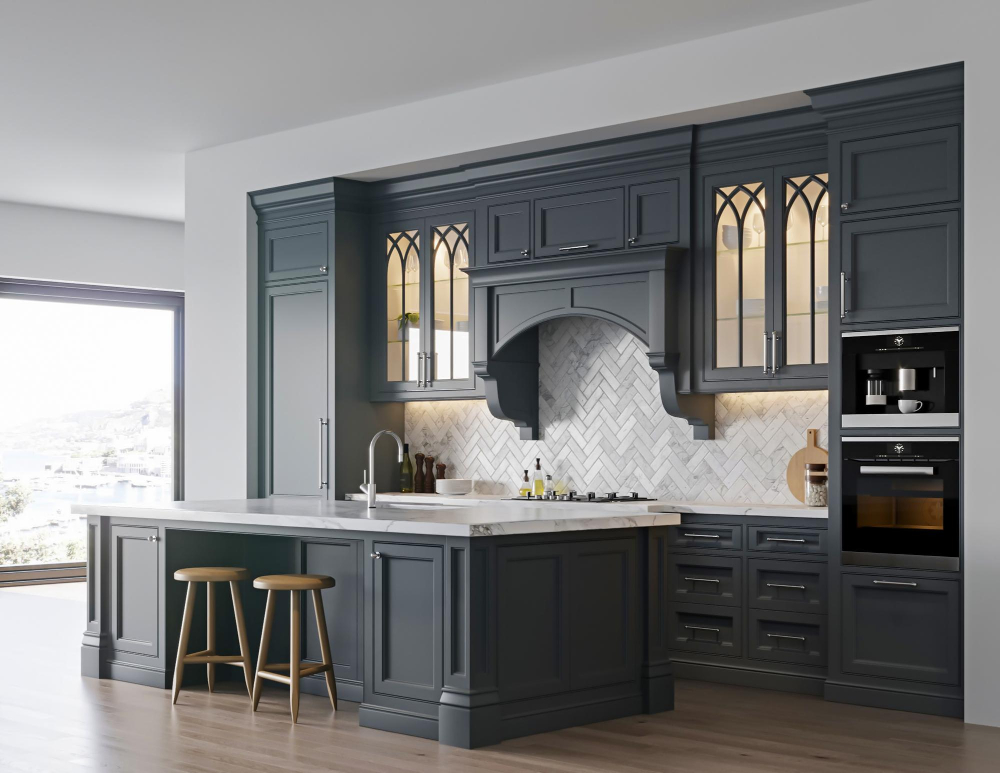
First and foremost, you want a finish that complements your overall design aesthetic. If you have a modern kitchen with sleek lines and minimalistic features, high-gloss or matte finishes may be the way to go.
On the other hand, if you have a more traditional style with ornate details and warm colors, stained or glazed finishes might be better suited.
Another important factor is durability. Kitchen cabinets endure daily wear-and-tear from cooking spills, moisture buildup from dishwashers or sinks nearby as well as frequent opening/closing of doors & drawers etc., so it’s essential that they can withstand these conditions without showing signs of damage easily.
Lastly but not leastly is budget – some cabinet finishes are more expensive than others due to their materials used in production process such as wood veneer vs laminate which can affect pricing significantly depending on what type suits best for individual needs/budgets!
Maintenance Tips for Finished Cabinets
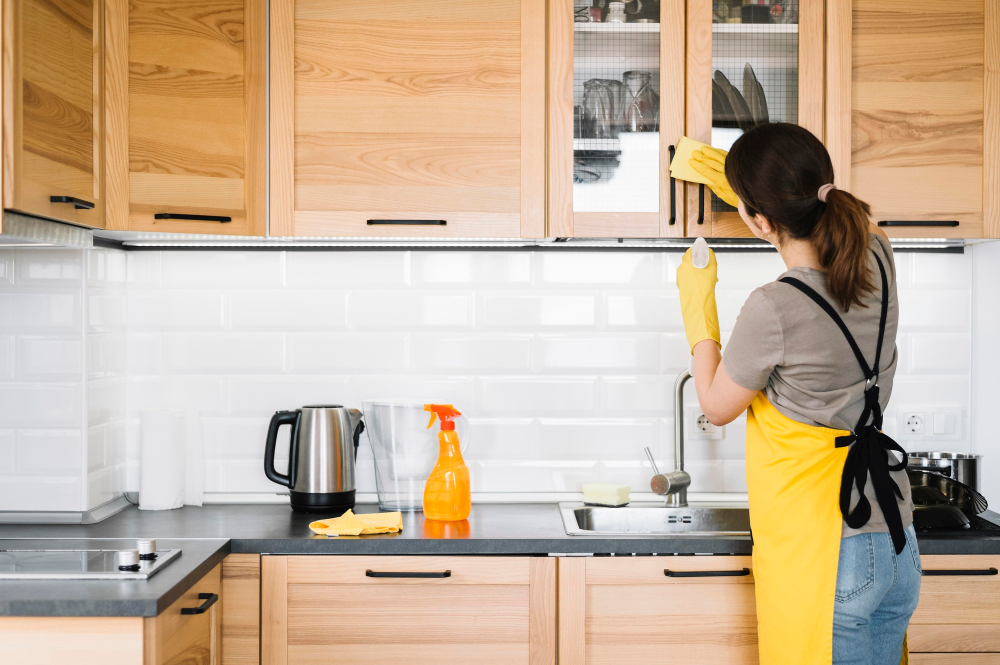
Here are some tips on how to care for different types of finishes:
For painted cabinets, avoid using abrasive cleaners or scrubbers that can scratch the surface. Instead, use a soft cloth and mild soap and water solution.
Stained cabinets should be cleaned with a damp cloth and dried immediately afterward. Avoid using harsh chemicals or solvents that can damage the finish.
Glazed cabinets require special care as they have an extra layer of protection over the paint or stain. Use only non-abrasive cleaners specifically designed for glazed surfaces.
Distressed cabinet finishes should not be cleaned with water as it can seep into cracks and crevices causing further damage. Instead, use a dry microfiber cloth to remove dust buildup gently.
Laminate finishes are easy to clean but prone to scratches; therefore, avoid using abrasive sponges while cleaning them. Thermofoil is sensitive material so do not expose it directly under sunlight because heat may cause peeling off its layers.
Acrylic Cabinets need regular cleaning by wiping down with warm soapy water followed by drying up immediately after washing. High-gloss Cabinets must be wiped down regularly since fingerprints show easily on this type of finish Wood Veneer Cabinets require gentle treatment when being cleaned since they’re made from thin slices of wood glued together which makes them susceptible if exposed too much moisture.
By following these simple maintenance tips tailored towards each specific type of cabinet finish in your kitchen will ensure longevity in their appearance while keeping your cooking space looking fresh all year round!
FAQ
What is the best interior finish for kitchen cabinets?
The best interior finish for kitchen cabinets is generally either acrylic or laminate, as they are both heat- and water-resistant, suitable for hot and humid environments, and easy to clean.
What is the most durable finish for kitchen cabinets?
The most durable finish for kitchen cabinets is a catalyzed conversion varnish, as it is chemical and moisture resistant, easy to clean, and more flexible.
What finish do professional cabinet makers use?
Professional cabinet makers typically use a polyurethane catalyzed varnish as a topcoat to provide extra durability and heat resistance for their cabinetry.
Is Matt or gloss better for kitchen cabinets?
Gloss is better for kitchen cabinets because it reflects light and makes the kitchen appear more spacious, especially in small kitchens.
What are the latest trends in kitchen cabinet finishes?
Latest kitchen cabinet finishes trends include matte, high-gloss, solid color, wood grain, and various textures, providing versatility and style for modern designs.
How do different cabinet finishes impact the overall kitchen aesthetic?
Different cabinet finishes impact the overall kitchen aesthetic by influencing its visual appeal, style, and ambiance.
What factors should be considered when choosing the perfect finish for kitchen cabinets?
When choosing the perfect finish for kitchen cabinets, consider factors such as durability, aesthetic preferences, cost, and the overall style of the kitchen.




